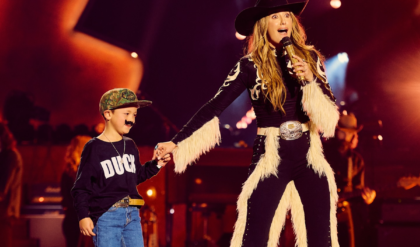With the MCU and the new DCU aiming for safe bets and homogeneity, we miss the Wild West era of superhero media
Deadpool & Wolverine serves as the official, final nail in the coffin of 20th Century Fox’s Marvel movies, and the welcome party that brings Deadpool and the X-Men into the Marvel Cinematic Universe. But there’s more to the movie than Deadpool mocking the MCU and calling himself “Marvel Jesus,” come to save the Avengers. And there’s more to it than transgressive humor and over-the-top violence. It’s also a moderately poignant goodbye letter to an entire era of superhero-movie experimentation that’s now dead and gone.

While Hugh Jackman’s return to Wolverine in Deadpool & Wolverine was wisely advertised and expected, the various 20th Century Fox Marvel cameos are surprising because they’re celebrating characters who weren’t celebrated in their time. The reappearance of Jennifer Garner as Elektra or Chris Evans as the Human Torch aren’t triumphant returns for iconic movie characters. Other than Wesley Snipes’ Blade, from the movie that proved Marvel superheroes could launch successful movies, and X-23 from Logan, the movie that tried to give Fox’s X-Men franchise a poignant ending, we mostly get cameos of characters from massive flops, and one from a movie that never even got made.
The cameos are a reminder of an era when superhero movies weren’t concerned with building larger universes or supporting sprawling multimedia empires. Filmmakers were forced to experiment with every new superhero movie, trying to find a believable look, a winning story formula, and an approach that was unique enough to stand out and be memorable.
In 2024, it seems like that experimentation has ended, at least for Marvel movies. Disney and Marvel Studios downsized their annual output of Marvel movies and shows in the wake of a recent viewership lull. The news that Robert Downey Jr. is returning to Marvel to play Doctor Doom and the Russo brothers are set to direct the next two Avengers movies feels like Marvel retreading its old successes, rather than trying to find the next thing that works.
Priorities have changed for DC Entertainment as well. James Gunn’s new DC Universe is all about synergy — about having the same actors play their characters across film, TV, animation, and even video games, as these stories all take place in the same continuity. This means no longer relying on hiring seasoned voice actors to play roles in animation and video games: Instead, DC is pushing screen actors into formats they aren’t necessarily familiar with, and which aren’t the same as acting on a set. This effectively kills the chance of DC projects discovering the next Kevin Conroy or the next Phil LaMarr.

Image: Marvel, Walt Disney Studios / Everett Collection
But the damage conformity and homogenity has done and will keep doing to the superhero field runs deeper. In Marvel’s case, while Phase 5 of the MCU has felt disjointed, leading to many meta gags in Deadpool & Wolverine, it’s indubitably included some experimentation as well. During this phase, we got Shang-Chi and the Legend of the Ten Rings, and Disney Plus shows allowed smaller characters like Ms. Marvel and Moon Knight to take the spotlight. And let’s not forget how weird and great Loki is. These titles are vastly different from each other, and different from anything Marvel has done before. Just look at Ms. Marvel, the Marvel equivalent of a 2000s Disney Channel TV show, but with a much bigger budget.
But with Marvel cutting back on TV shows, it seems less and less likely that smaller characters will get that kind of spotlight space. It’d be more in keeping with Disney’s current strategy to head back to the time of Agents of S.H.I.E.L.D. and other inconsequential, low-budget shows that barely connect to the movies. In the past, that lack of connection was because TV production timelines and film development timelines don’t mesh well, but it feels like we’re heading into an era where the TV and movie aspects of the MCU will have to separate because the shows won’t have the scale or budget to share talent with the movies.
As bad as Secret Invasion was, Marvel did get us an entire six-episode TV show starring Samuel L. Jackson, who’s rarely worked in TV over the past 20 years. There may be yet an occasional movie or TV show that strays from the formula a bit, but how long will we have to wait to get those crumbs if Marvel’s resetting its table?
When it comes to the DC Universe, we’re already seeing the ways the mandate for synergy in the DC Universe is affecting new titles, even before the first one is released. At a presentation for Gunn’s Creature Commandos at the Annecy Animation Festival, the producers talked openly about the limitations of synergy on their work, and how they were forced to tone down some of the show’s character and location designs, either to look more like their live-action counterparts or to work better in live-action. They showed a concept art for the Belle Reve prison as a gothic, expressive locale set high atop a hill and with a spooky green light — but that image was replaced with a bland building that matched what we’ve seen in James Gunn’s The Suicide Squad and Peacemaker.

The Suicide Squad. Image: Warner. Bros. Pictures
James Gunn has promised that his DCU will still allow movies like Matt Reeves’ The Batman to exist in their own bubble universes, but it’s unclear whether Warner Bros. Discovery CEO/president David Zaslav feels the same way. With Zaslav overseeing so much cost-cutting at Warner Bros., the question that’s plagued DC for decades has resurfaced: Is it worth having two versions of Batman on screen at the same time, even if they’re aimed at different audiences?
Aside from the cross-universe shenanigans in the best-forgotten The Flash, DC has never allowed more than one Batman in live-action at the same time. Once we get The Brave and The Bold and the new DC Universe Batman, what happens to Batman: Caped Crusader? With Young Justice seemingly dead and gone, the only animated DC TV projects still alive seem to be those based on the Harley Quinn universe, the only DC property to have survived two streamers and a merger.
The cinematic superhero landscape wasn’t always about streamlined stories and ever-more-complicated continuities. Marvel experimented widely throughout the 2000s, due to having to license its characters to different studios, which competed with each other by delivering vastly different and unique movies and TV shows. DC still allowed for its own brand experimentation until recently: After the failure of the Snyderverse, DC did away with continuity and allowed lighter movies like Shazam! and Blue Beetle to co-exist with The Suicide Squad and Joker. But with Gunn cracking down on visual and character cohesion across his version of the DC Universe, that kind of exploration seems a lot less likely.
Deadpool & Wolverine is full of silly jokes about Marvel Jesus and Marvel Studios president Kevin Feige banning cocaine humor. But it’s also a pointed celebration of an era when mainstream and blockbuster superhero movies weren’t all so firmly built around formula, when they were allowed to be (and often had to be) weird. Some of those weirder projects succeeded; others failed spectacularly, which is memorable too. This is a movie that puts Channing Tatum’s questionable Cajun costume and accent front and center, and asks, “Isn’t it cool that this was once considered for a big superhero movie?”

Shazam! Image: Warner Bros. Pictures
The future of superhero movies looks uniform and dull at this particular moment, with the majors going back to basics. But then again, we’ve been here before. The MCU has reached a low point, as Deadpool & Wolverine points out several times. But maybe that movie’s tremendous success — even as an R-rated, endlessly referential, above all pretty weird project — can be a wakeup call for Marvel, a reminder that standing out from a pack of samey, similar product is a good thing for any movie.
As for DC, there’s always hope — James Gunn is still, after all, the guy who turned a movie about a CG tree-man with a one-word vocabulary and his talking-raccoon buddy into a thriving franchise. So there’s always some hope that he’ll bring oddity and color back to DC. If not, we at least have Channing Tatum’s short but wonderful cameo as Gambit — and whatever bits and bobs of past experimental eras the Deadpool franchise resurfaces next.





